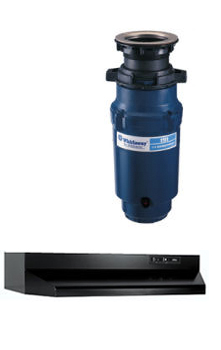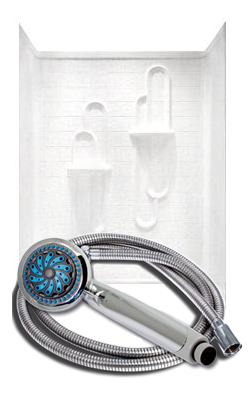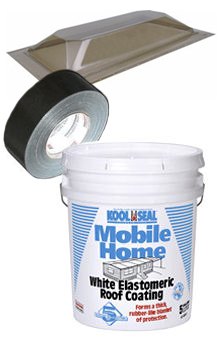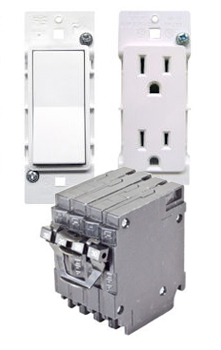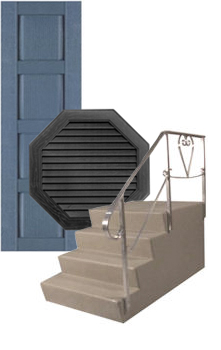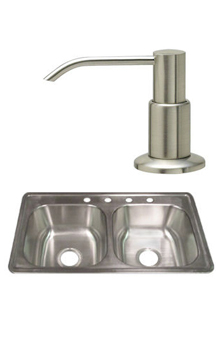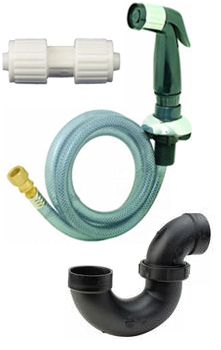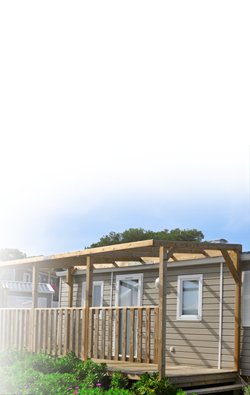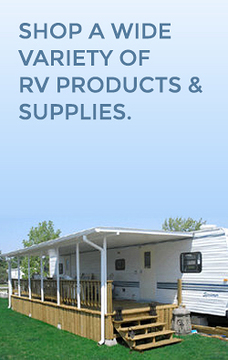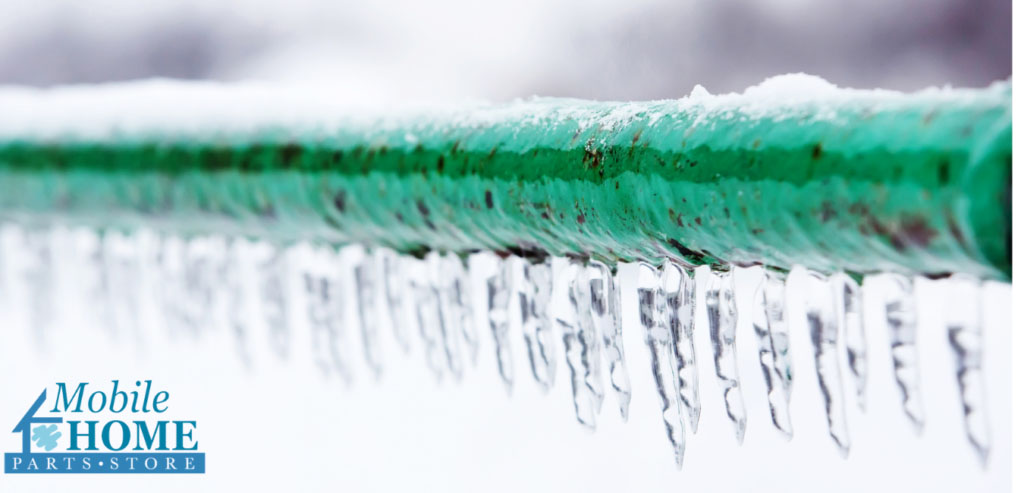
Frozen Pipes on mobile homes are a widespread issue. Most mobile homeowners will become familiar with frozen pipes and how to deal with them. If you are a new mobile homeowner, it is crucial to understand how to replace, repair, and prevent frozen pipes on mobile homes. Otherwise, frozen pipes on a mobile home can be a big issue. When water freezes and expands, it can break piping leading to leaks and interior damage. If you have personally experienced frozen pipes on a mobile home, you know it is a severe issue. The most important of these steps is to prevent frozen pipes on a mobile home. You can take a few significant steps to avoid frozen pipes on a mobile home.
How to Prevent Frozen Pipes in Mobile Homes
Preventing frozen pipes is the most effective way to avoid costly repairs and water damage. Winterizing your mobile home should be a top priority as temperatures drop. Here are the key steps you can take:
Secure Your Mobile Home Skirting
Mobile home skirting acts as the first line of defense against freezing temperatures. Since mobile homes are elevated, skirting helps insulate the area beneath your home. Ensure that all sections of skirting are intact and securely in place. Loose or damaged skirting allows cold air to circulate under your home, increasing the risk of frozen pipes. Conduct a thorough inspection to repair or replace any compromised panels.
Check the Underbelly (Underlayment)
The underbelly or underlayment of your mobile home is another crucial barrier. This plastic or foil-like material protects your home from pests and moisture, but it also helps retain heat around your plumbing. Inspect the underbelly for holes or sagging sections and repair any damage to maintain insulation.
Insulate Your Pipes
Properly insulating your pipes is one of the most effective ways to prevent freezing. Here are some tools and materials to consider:
- Electric Water Pipe Heat Cable: These cables can be installed along your pipes to provide consistent heat and prevent freezing. Ensure the cable is UL-listed and suitable for your specific pipe material.
- Pipe Wrap Fiberglass Insulation: This wrap offers excellent thermal protection and is easy to install around exposed pipes. Make sure to overlap the layers for complete coverage.
- Frost King® Pipe Wrap Insulation Tape: This self-adhesive tape wraps securely around your pipes, providing a quick and effective insulation solution.
When using any insulation method, ensure that pipes are fully covered with no gaps or exposed areas. Pay special attention to pipes near exterior walls or unheated spaces, as these are more vulnerable to freezing.
Allow Faucets to Drip on Cold Nights
On especially cold nights, leave faucets slightly open to allow a small trickle of water. This keeps water moving through the pipes, reducing the chance of freezing.
Use Heat Sources When Necessary
If your mobile home has areas prone to freezing, consider using a space heater (placed safely) or a heated mat to add warmth. Just be sure to follow all safety precautions to avoid fire hazards.
By taking these preventive steps and using high-quality insulation products, you can significantly reduce the risk of frozen pipes in your mobile home.
What to Do If Your Pipes Freeze
Despite your best efforts, frozen pipes can still occur. Acting quickly is essential to prevent them from bursting.
Step 1: Identify the Frozen Section
If water flow has stopped or slowed, begin by turning on all faucets in your mobile home. This can help you locate where the blockage is. If no water flows anywhere, the problem is likely at the main water line.
Inspect exposed pipes for signs of frost, ice buildup, or discoloration. Use your hands to feel for the coldest sections of the pipe. Tapping the pipe gently with a solid object can also help you find where the ice blockage starts.
Step 2: Turn Off the Water Supply
Before attempting to thaw the pipe, turn off the main water supply. This reduces pressure in the system and minimizes the risk of a burst pipe.
How to Thaw Frozen Pipes in Mobile Homes
Once you’ve located the frozen section, you can begin the thawing process. Here are some safe and effective methods:
Hairdryer or Heat Gun
Use a hairdryer or heat gun to warm the frozen pipe gradually. Start at the faucet end and move toward the blockage to allow melting water to escape. Keep the heat source moving and avoid overheating any one spot to prevent pipe damage.
Warm Towels
Soak towels in warm water, wring them out, and wrap them around the frozen section of the pipe. Replace the towels with freshly warmed ones every 5-10 minutes until the ice melts.
Heat Tape
Electric heat tape is one of the most reliable tools for thawing frozen pipes. Wrap the heat tape snugly around the pipe (without overlapping) and plug it in. Follow the manufacturer’s instructions carefully to avoid overheating or creating a fire hazard.
Space Heater or Heat Lamp
Place a space heater or heat lamp near the frozen pipe to gently warm the area. Ensure the heat source is at a safe distance and monitored to prevent accidents.
Caution: Never use an open flame or blowtorch to thaw pipes, as this poses a serious fire risk and can damage the piping.
Repairing or Replacing Damaged Pipes
If a frozen pipe cracks or bursts, repairs are necessary to restore your water system.
Turn Off the Water
Before making any repairs, ensure the main water supply is turned off.
Remove Damaged Sections
Cut out the damaged section of pipe using a pipe cutter. Make clean, straight cuts to ensure a proper fit for the replacement pipe.
Install Replacement Pipe
Measure and cut a new pipe section to the exact length of the removed piece. Attach the new pipe using couplings, ensuring a snug fit on both ends. Use pipe sealant or plumber’s tape if necessary to create a watertight connection.
Test the Repair
Turn the water supply back on slowly and check for leaks around the repaired section. Tighten connections if needed, and add insulation to the new pipe to prevent future freezing.
In Summary
No one wants to deal with frozen pipes on a mobile home. It takes your time, energy, and sometimes money. However, if you have owned your mobile home for a while, you know frozen pipes on a mobile home are a common issue. You must take appropriate steps to winterize a mobile home. Winterizing a mobile home will pay dividends and help prevent frozen pipes on mobile homes. Ideally, you won’t have to deal with them at all. When they do come about, you want to make sure you have all of the tools and knowledge you need to deal with them.
For all your pipe insulation, repair supplies, and mobile home maintenance needs, visit Mobile Home Parts Store today!
Tags: Frozen pipes on a mobile home, mobile home frozen pipes, Prevent frozen pipes on mobile homes, Winterize a mobile home


